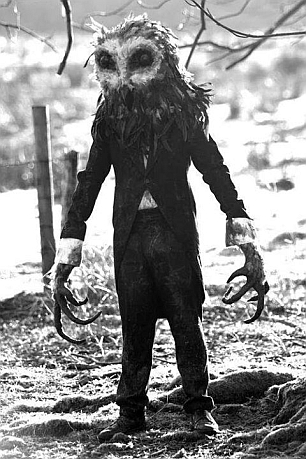
Earlier I fiddled with the rules in Stars Without Number. Today, I amp up the fiddling to full-blow tweaking.
The Gist of It All
There are two types of dice rolls made to determine success: either 1d20 or 2d6.
* For a 1d20 roll, 20+ means the character succeeds, 13-19 means the character succeeds but with some sort of complication or consequence, and 12 or less means the GM says what happens, but the character earns some bonus experience points.
* For a 2d6 roll, 10+ means the character succeeds, 7-9 means the character succeeds but with some sort of complication or consequence, and 6 or less means the GM says what happens, but the character earns some bonus experience points.
Combat
There are two basic combat moves, one for melee combat, the other for ranged combat. Here they are, ripped from Dungeon World and mercilessly tweaked for Stars Without Number:
Hack and Slash: Roll 1d20 + attack bonus + attribute bonus associated with weapon + combat skill level + target’s Armor Class. A modified melee attack roll of 20+ is a hit, and the character deals damage and avoid the enemy’s attack. At the player’s option, the character may deal +50% damage but is then exposed the enemy’s attack. A modified melee attack roll in the 13-19 range is also a hit, but the enemy also makes a successful attack against that character.
Volley: Roll 1d20 + attack bonus + attribute bonus associated with weapon + combat skill ranks + target’s Armor Class. A modified melee attack roll of 20+ is a hit, and the character deals damage. A modified melee attack roll in the 13-19 range is also a hit, you must choose one consequence:
* You have to move to get the shot, placing you in danger as described by the GM, or
* Your shot is ill-placed, and deals half damage, or
* You have to take several shots to hit, using twice as much ammo.
The next move is used when a character defends a person, item, or location from attack. Relevant attribute bonus and skill ranks are determined by player description and GM adjudication.
Defend: Roll 1d20 + attack bonus + relevant attribute bonus + relevant skill ranks. On 20+, choose three options. On 13-19, choose one option.
* Redirect an attack from the thing you defend to yourself, and/or
* Halve the attack’s effect or damage, and/or
* Open up the attacker to an ally, giving that ally a +1 bonus against the attack, and/or
* Deal damage to the attack equal to your level.
Skills & Skill Checks
I want to simplify the skill points system. A character gets a list of skills determined by Background Package and Training Package. A skill that occurs in only one package starts at skill level 0. If a skill occurs in both packages, it starts at skill level 1. At 1st level, every character picks one package skill as a specialty. This skill gains a +1 bonus to skill level.
At each level after first, an expert receives +3 pips, and warriors and psychics receive +2 pips. All characters receive bonus pips equal to his prime attribute bonus. The player divides these pips between skills as desired, including new skills. Except for the character’s chosen specialty, a character’s maximum level in a skill is equal to 1, plus their level divided by 3, rounded down. The maximum level for a character’s specialty is equal to 2, plus their level divided by 3, rounded down.
For example, 1st-level expert Rocket Rob Braden has a 14 Intelligence, and his backgrounds are Astrogater’s Mate and Pilot. His starting skills and skill levels, with a Vehicle/Space specialization, are Combat/Gunnery 0, Culture/Spacer 1, Exosuit 0, Navigation 1, Science 0, Tech/Astronautics 0, Tech/Postech 0, Vehicles/Air 0, and Vehicles/Space 2. At 2nd level, Rocket Rob receives +4 pips. His skills become Combat/Gunnery 1, Culture/Spacer 1, Exosuit 1, Navigation 1, Science 0, Tech/Astronautics 1, Tech/Postech 0, Vehicles/Air 1, and Vehicles/Space 2.
Stars Without Number uses 2d6 + relevant skill level + relevant attribute modifier for skill checks. The total is compared to the check’s difficulty number, ranging from 6 to 13. Since I want Dungeon World-style static difficulty numbers, let’s convert the standard method to a modifier:
Difficulty 6 = +1 modifier
Difficulty 7 = +0 modifier
Difficulty 8 = -1 modifier
Difficulty 9 = -2 modifier
Difficulty 10 = -3 modifier
Difficulty 11 = -4 modifier
Difficulty 12 = -5 modifier
Difficulty 13 = -6 modifier
Use a Skill: Roll 2d6 + relevant skill level + relevant attribute modifier + difficulty modifier. On 10+, you succeed. On 7-9, you succeed, but with a complication or consequence.
Saving Throws
Standard Stars Without Number saving throws need to be converted to work with a static target number of 20+. This is done by determining the bonus for each saving throw category as 20 – the class’s save number. For example, a 1st-level expert must normally roll 16+ on 1d20 to make a Physical Effect save. Using my tweaked version, the 1st-level expert has a +4 bonus to Physical Effect saves.
When exposed to a danger that requires a saving throw, the GM typically determines the category (Physical Effect, Evasion, et cetera), but the player gets to describe how the character attempts to avoid the effect. This description helps determine the relevant ability score modifier.
Make a Saving Throw: Roll 1d20 + save category modifier + relevant skill modifier. A modified roll of 20+ is a success. A modified roll in the 13-19 range means the character stumbles, hesitates, flinches, et cetera. The GM determines an appropriate effect that involves a worse outcome, hard bargain, or ugly choice.
Character Armor
The method of combat describe above makes a character’s Armor Class irrelevant for its normal purposes. Instead, a character’s Armor Class determines how much damage the character ignores from attacks. Subtract the character’s Armor Class from 9. This is how much damage he ignores from an attack.
This damage, less the character’s Dexterity modifier, instead affects the character’s armor directly. I’ll need to come up with how many hit points different armors and shields have, as well as a simple mechanic for repairing armor and shields.
Enemy Attacks
When a character is subjected to an enemy’s attack, the most common result is for the character to suffer damage. The damage is equal to the creature’s lowest damage die plus its attack bonus plus +1 for each additional attack in its attack routine.
For example, a Sarxian howling tiger inflicts 1d6+5 points of damage (1d6 for its claw, +4 for its attack bonus, and +1 more because it has two claw attacks).
Tags: A to Z 2013, Dungeon World, Stars Without Number



